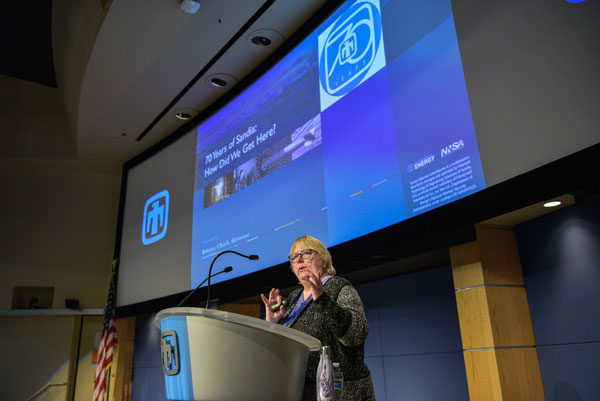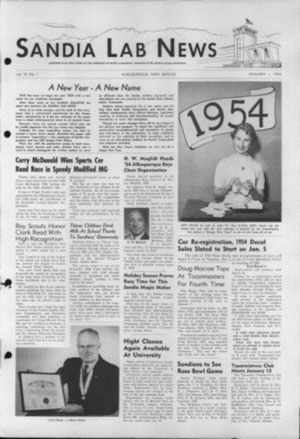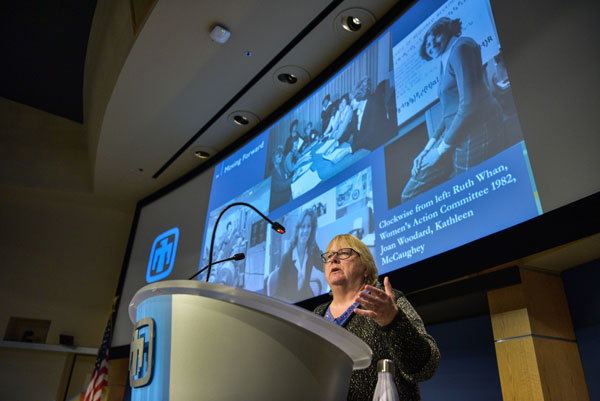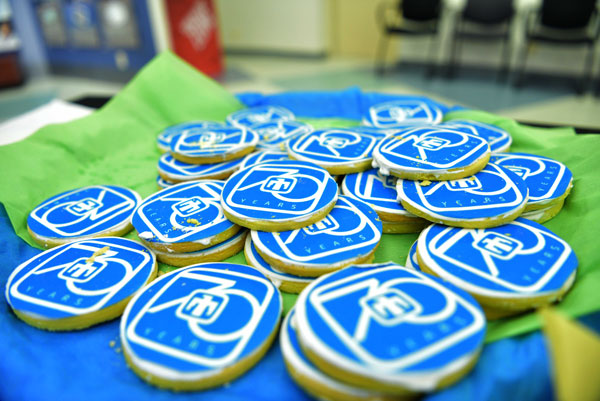
As part Sandia’s 70th anniversary celebration, Labs employees were treated to an insightful, humorous and engaging presentation, “70 years of Sandia: How did we get here?” by Sandia historian Rebecca Ullrich. During the presentation, Rebecca described the Labs’ path from its beginnings as part of Los Alamos National Laboratory to the launch of Sandia Corporation and the Albuquerque campus to the expansion of the Labs to its current state.
Along the way, she explained how Sandia’s initial nuclear weapons national security mission expanded to include research and development, and she highlighted the origins of Sandia’s casual culture, can-do attitude and straightforward approach to interactions.

Rebecca described the sense of community that developed early at Sandia, noting that the remote location, the secret nature of the work and the number of employees who came from other places led employees and their families to develop a tight-knit community, living in base housing and enjoying the amenities of the Coronado Club.
That community feel was evident in the Lab News precursor, Sandia Lab Bulletin, which featured stories about employees’ hobbies and adventures. The early Lab News continued that tradition, reporting on Sandia sports teams and events, hunting adventures, clubs and other recreational activities. Sandia’s thunderbird logo was the winning entry in a logo design competition — the top choices were printed in the Lab News and employees voted on the winner.

Rebecca also talked about the history of women at the Labs, noting that very few women started working in technical jobs at Sandia early on, but that the Labs’ focus on research and education opportunities helped female employees move beyond support roles to technical, scientific and leadership positions.
Wrapping up the talk with a brief Q&A, Rebecca was asked how the men who started Sandia Laboratory would feel about the Labs today. “When I look at Sandia, I can see the marks made by those in the 1940s and ‘50s,” she said. “They would probably say we have a lot more processes governing how we work, but I think they would still see the lab they built in the lab we have now.”
